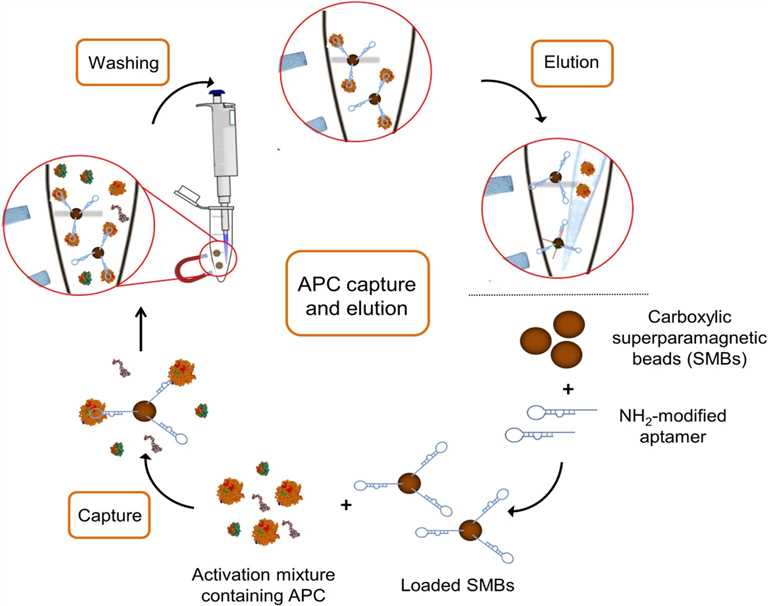Introduction of Magnetic Nanomaterials
Magnetic nanomaterials are one of the most important and emerging classes of materials in nanotechnology. They have been emerging as an important source of labels for sensing biomolecules because of their unique magnetic properties, small size, large surface-to-volume ratio, easy synthesis and functionalization, and good biocompatibility. When magnetic nanomaterials are applied to the biological analysis, their unique magnetic properties give them a unique advantage over other materials. Most biological samples have no magnetic behavior or susceptibility, so magnetic technology could achieve high sensitivity measurement without interference or noise during the signal capture process. Iron oxide nanoparticles such as Fe3O4 and γ-Fe2O3 nanoparticles are typically ferromagnetic or superparamagnetic. They are the most extensively investigated magnetic nanomaterials for clinical diagnostic and therapeutic applications. Fe3O4 nanoparticles have an inverse spinel structure and can be doped with other divalent transition metal ions such as Mn2+, Co2+, and Ni2+ to further regulate their magnetism. The produced MnFe2O4, CoFe2O4, and NiFe2O4 nanoparticles are also widely used in biomedical fields. Besides, there are also have other metallic and bimetallic nanoparticles such as Fe, Fe5C2, FeCo, and FePt nanoparticles, which are also ferromagnetic or superparamagnetic and used as excellent candidates for magnetic bioanalysis.
 Fig.1 Application of magnetic-based nanomaterials for purification and capturing of APC.1, 3
Fig.1 Application of magnetic-based nanomaterials for purification and capturing of APC.1, 3
Application of Magnetic-based Nanomaterials
- Magnetic Separation
Magnetic nanomaterials are useful and powerful tools for the separation, purification, and enrichment of various biological analytes (e.g., antibody and nucleic acids) from raw samples. In a general separation procedure, biological analytes bind to appropriate magnetic nanoparticles through the interaction between them such as affinity adsorption, antibody-antigen interaction, and hydrophobic interactions. The analyte-nanoparticle complexes can be separated by a magnet. After the separation, the complexes can be directly used for the subsequent analysis, or the analytes are further eluted from the nanoparticles and then used for bioanalysis. For example, magnetic nanoparticles are widely used for the separation of nucleic acids (DNA and RNA) which plays an important role in molecular diagnostics. The functionalization of the magnetic nanoparticles with positively charged species allows the adsorption of nucleic acids. Besides, the surface of magnetic nanoparticles modified with biorecognition ligands allows the selective capture of target nucleic acids from biological matrices.
- Magnetic Sensors
Owing to their unique magnetic properties, magnetic nanomaterials can be used as an important source of labels for sensing biomolecules. In the magnetic relaxation switch technique, magnetic nanomaterials can be used as magnetic-resonance-based biosensors because they can shorten the relaxation time of surrounding water particles. This technique has successfully been used for the detection of a wide variety of biological analytes such as small molecules, proteins, nucleic acids, bacteria, viruses, and cancer cells, with high sensitivity and selectivity. Besides, the use of magnetic nanomaterials as labels for biomolecule detection methods include magnetic nanoparticle relaxation sensing and reluctance sensing.
 Fig.2 Magnetic biosensor.2, 3
Fig.2 Magnetic biosensor.2, 3
Our Capabilities
With years of experience in IVD testing development, Creative Biolabs is confident in providing one-stop IVD assay development services, including experimental scheme design, preparation of testing materials, validation of sensitivity, specificity, and stability of the testing. We are committed to delivering sensitive and accurate IVD testing services. If you are interested in our services, please contact us to discuss your project and get more details.
References
- Hamedani, Nasim Shahidi, et al. "Aptamer loaded superparamagnetic beads for selective capturing and gentle release of activated protein C." Scientific Reports 12.1 (2022): 7091.
- Vidic, Jasmina, et al. "Point-of-need DNA testing for detection of foodborne pathogenic bacteria." Sensors 19.5 (2019): 1100.
- Distributed under Open Access license CC BY 4.0, without modification.
For Research Use Only.

